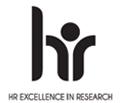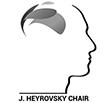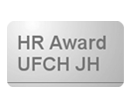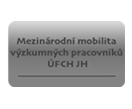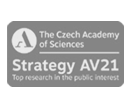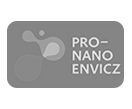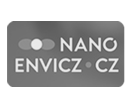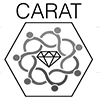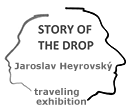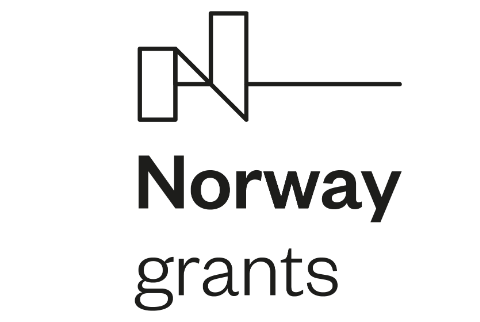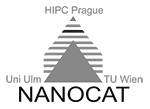Prof. Petr Zuman (1926 – 2021)
Professor Petr Zuman passed away on Thursday the 24th of June, 2021 in the morning in his sleep at home in Potsdam (N.Y.) in the presence of his son John and nurse Gina, at the blessed age of 95.
Petr Zuman was probably the last of the direct students and collaborators of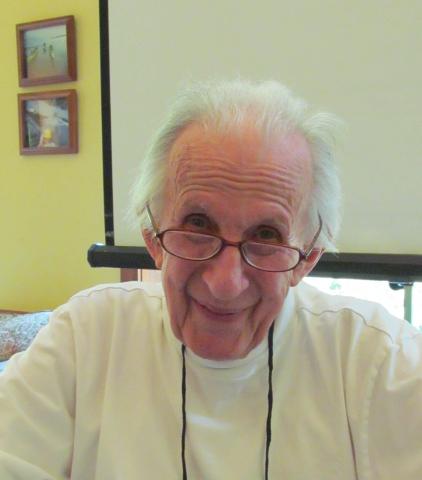 Prof. Heyrovský. After graduating from Charles University, he was first Heyrovsky’s assistant (1948-1950), and then continued with him in the newly established Central Polarographic Institute, which was then part of the Czechoslovak Academy of Sciences from the 1st of January, 1953. Here he founded the laboratory of organic electrochemistry, which he headed until 1966 (his collaborator and successor was doc. Jiří Volke). In 1966 he went on a research internship to Birmingham, which was eventually extended until 1970. At that time, he accepted an offer from the well-known electrochemist prof. Louise Meites and became Professor of Chemistry at Clarkson University in Potsdam, North New York. When he reached retirement age after thirty years, he was appointed a “Distinguished Emeritus Research Professor”, but he continued his scientific, pedagogical and lecturing activities until he was ninety. Since 2016, his limited mobility did not allow him to go to university, so at least he consulted the results of his colleagues remotely and his informal lectures at Clarkson were well attended.
Prof. Heyrovský. After graduating from Charles University, he was first Heyrovsky’s assistant (1948-1950), and then continued with him in the newly established Central Polarographic Institute, which was then part of the Czechoslovak Academy of Sciences from the 1st of January, 1953. Here he founded the laboratory of organic electrochemistry, which he headed until 1966 (his collaborator and successor was doc. Jiří Volke). In 1966 he went on a research internship to Birmingham, which was eventually extended until 1970. At that time, he accepted an offer from the well-known electrochemist prof. Louise Meites and became Professor of Chemistry at Clarkson University in Potsdam, North New York. When he reached retirement age after thirty years, he was appointed a “Distinguished Emeritus Research Professor”, but he continued his scientific, pedagogical and lecturing activities until he was ninety. Since 2016, his limited mobility did not allow him to go to university, so at least he consulted the results of his colleagues remotely and his informal lectures at Clarkson were well attended.
During these 45 active years at Clarkson, Prof. Zuman lectured 27 different courses, mainly in analytical, organic and general chemistry. He was a supervisor to 14 PhD., 12 M.Sc. and 24 B.Sc. students. During his lifetime, he published over 450 articles and wrote 15 monographs, including his two famous compendiums Handbook Series in Organic Electrochemistry (6 volumes) and Handbook Series in Inorganic Electrochemistry (8 volumes) published between 1977-1988 (CRC Press, Boca Raton, Florida). It contained complete electrochemical data published up to the 1980s and to this day represents a basic source of electrochemical information covering half a century of electrochemical development.
Scientific interests of Prof. Zuman focused on organic electroanalytical chemistry with an emphasis on the mechanism of ongoing reactions initiated by electron transfer at the electrode. He used mainly polarography, later cyclic voltammetry, UV-vis spectrometry and kinetic measurements. Because his favorite electrode material was mercury, his research focused on reduction and hydrolytic processes mainly in the aqueous environment. Therefore, his result were directed mainly to the field of pharmacology, medicine, biology and the environment, where they served both as a basis for electroanalytical determinations, as well as for a better understanding of the biological activity of the studied substances and their metabolism. He paid special attention to lignin and its cleavage, not only for its adsorption properties usable in the environment but also for its future use in industry as a source of aromatics when coal and natural gas sources are depleted, as lignin is a natural renewable resource.
In the international field, he has long collaborated with electrochemists in Serbia, Turkey and Italy. It was his joint research with colleagues from the University of Bologna that was awarded an honorary doctorate. However, his desire was to renew cooperation with his Czechoslovak colleagues, especially with his “mother” laboratory at the Heyrovský Institute. This did not succeed until 1989, when he was able to return to his homeland after more than twenty years. Already his first visits resulted in a subsequent thirty-year collaboration with the Molecular Electrochemistry team, where he participated in three bilateral Czech-American grant projects focused on the study of intramolecular electronic interactions in organic molecules with multiple redox centers.
Until 2015, he regularly visited Heyrovský Institute at least once a year in Prague, attended Heyrovsky’s discussions and other professional events and participated in congresses. His lectures contributed not only to the enrichment of our electrochemical community, but also to the spread of the good name of Czech chemistry abroad. This fact was awarded the Heyrovský Medal and the award of Honorary Membership of the Czech Chemical Society. After 2015, our communication had to be limited to emails of a scientific and personal nature, which continued until the last days of Prof. Zuman.
Not to mention the 65-year marriage to Radmila, their two children, 6 grandchildren and an increasing number of great-grandchildren. Radmila was a teacher and artist by profession, she became a world-renowned expert in historical and modern artistic lace, and organized courses around the world. She accompanied Prof. Zuman all his life until her death in 2016, thus creating an important family background for him.
In addition to electrochemistry, Prof. Zuman especially liked sports and culture. With his tall stature, he was an excellent basketball player in his youth and later worked as a league and international basketball referee. He was known for his characteristic strong-sounding voice, which was much appreciated during his lectures. He himself explained this by saying that during basketball matches, when not even a whistle could be heard properly, he had to get his voice in order. He also loved (and played) volleyball, swimming and in winter he used to ride cross-country skis to the university.
He loved literature, theater and opera. Whenever he came to Prague, he bought newspapers with programs of theaters and concerts and, if possible, bought a ticket for a performance for each evening (see a good caricature by Prof. Herman). In addition, he was a great expert on history and spoke five languages.
During those thirty years of cooperation, I got to know Petr very personally and I can say that he was an excellent pedagogue and mentor not only for his students and younger colleagues, but for the entire electrochemical community. He was a kind and fair personality with a deep spiritual overlap. Therefore, in addition to grief over his departure, we are filled with gratitute for his long and fruitful life.
Jiří Ludvík
The most internationally important monograph of Prof. Zuman:
J. Heyrovský and P. Zuman: Introduction to Practical Polarography, (1968), Academic Press, London.
M. Březina and P. Zuman: Polarography in Medicine, Biochemistry and Pharmacy, Interscience, New York (1958),
P. Zuman: Organic Polarographic Analysis, Pergamon, London (1964).
P. Zuman: Substituent Effects in Organic Polarography, Plenum Press, New York (1967).
P. Zuman and I.M. Kolthoff (Eds.): Progress in Polarography, Vols. I and II, Interscience, J. Wiley, New York (1962), P. Zuman, L. Meites and I.M. Kolthoff (Eds.): Progress in Polarography, Vol. III, J. Wiley, New York (1972).
P. Zuman: The Elucidation of Organic Electrode Processes, Academic Press, New York (1969).
P. Zuman and C.L. Perrin: Organic Polarography, Interscience, J. Wiley, New York (1969).
P. Zuman and R. Patel: Techniques in Organic Reaction Kinetics, J. Wiley, New York (1984), Krieger Publ. Co. (1992).
CRC Handbook Series in Organic Electrochemistry, CRC Press, Cleveland, OH; West Palm Beach, FL (with L. Meites and others), Vols. I and II (1977), Vol. III (1978), Vol. IV (1980), Vol. V (1982), Vol. VI (1985).
CRC Handbook Series in Inorganic Electrochemistry, CRC Press, Boca Raton, FL (with L. Meites and others), Vol. I (1980), Vol. II (1981), Vol. III (1983), Vol. IV (1984), Vol. V (1985), Vol. VI (1986), Vol.VII (1986), Vol.VIII (1988)
Prof. Petr Zuman nás předešel na věčnost ve čtvrtek 24. června 2021 ráno, ve spánku, doma v Potsdamu (N.Y.), za přítomnosti svého syna Johna a ošetřovatelky Giny v požehnaném věku 95 let.
Petr Zuman byl zřejmě poslední z přímých žáků a spolupracovníků prof. Heyrovského. Po absolvování Karlovy univerzity byl nejprve Heyrovského asistentem (1948-50), aby pak s ním pokračoval v nově zřízeném Ústředním ústavu polarografickém, který byl pak od 1.1.1953 součástí ČSAV. Zde založil laboratoř organické elektrochemie, kterou vedl do r 1966 (jeho spolupracovníkem a nástupcem byl doc. Jiří Volke). V roce 1966 odjel na vědeckou stáž do Birminghamu, která se nakonec prodloužila až do r. 1970. Tehdy přijal nabídku od známého elektrochemika prof. Louise Meitese stát se profesorem chemie na Clarkson University ve městečku Potsdam na severu státu New York. Když po třiceti letech dovršil penzijní věk, byl jmenován "Distinguished Emeritus Research Professor", nicméně ve vědecké, pedagogické i přednáškové aktivitě pokračoval až do svých devadesáti let. Od roku 2016 mu omezená pohyblivost nedovolovala chodit na universitu, tak alespoň na dálku konzultoval výsledky spolupracovníků a jeho neformální přednášky na Clarksonu byly hojně navštěvovány.
V průběhu těchto 45 aktivních let na Clarksonu přednášel prof. Zuman 27 různých kurzů, hlavně v oblasti analytické, organické a obecné chemie, byl školitelem 14 Ph.D., 12 M.Sc. a 24 B.Sc. studentů. Za svůj život publikoval přes 450 článků a napsal 15 monografií, z nichž jeho dvě slavná kompendia Handbook Series in Organic Electrochemistry (6 dílů) a Handbook Series in Inorganic Electrochemistry (8 dílů) publikovaná v letech 1977-1988 (CRC Press, Boca Raton, Florida) obsahovala kompletní elektrochemická data publikovaná do 80. let a dodnes představují základní zdroj elektrochemických informací pokrývající půl století vývoje elektrochemie.
Vědecké zájmy Prof. Zumana se orientovaly na organickou elektroanalytickou chemii s důrazem na mechanismus probíhajících reakcí zahájených přenosem elektronu na elektrodě. Využíval k tomu zejména polarografii, později i cyklickou voltametrii, UV-vis spektrometrii a kinetická měření. Protože jeho oblíbeným elektrodovým materiálem byla rtuť, jeho výzkum byl zaměřen na redukční a hydrolytické procesy převážně ve vodném prostředí. Proto jeho výsledky směřovaly hlavně do oblasti farmakologie, medicíny, biologie a životního prostředí, kde sloužily jednak jako podklady k elektroanalytickým stanovením, jednak k lepšímu pochopení biologické aktivity studovaných látek a jejich metabolismu. Zvláštní pozornost věnoval ligninu a jeho štěpení, a to nejen pro jeho adsorpční vlastnosti využitelné v životním prostředí ale i pro jeho budoucí využití v průmyslu jako zdroje aromátů, až budou vyčerpány zdroje uhlí a zemního plynu, neboť lignin představuje přirozený obnovitelný zdroj.
Na mezinárodním poli dlouhodobě spolupracoval s elektrochemiky v Srbsku, Turecku a v Itálii. Právě jeho společný výzkum s kolegy z Boloňské univerzity byl oceněn čestným doktorátem. Nicméně jeho touhou bylo obnovit spolupráci s československými kolegy, zejména s jeho "mateřskou" laboratoří v Heyrovského ústavu. To se podařilo až po roce 1989, kdy se po více než dvaceti letech mohl opět vrátit do své vlasti. Již jeho první návštěvy vyústily v následnou třicetiletou spolupráci s týmem Molekulární elektrochemie, kdy participoval na třech bilaterálních česko-amerických grantových projektech, jež byly zaměřeny na studium intramolekulárních elektronických interakcí v organických molekulách s více redox centry.
Až do roku 2015 pravidelně nejméně jednou ročně přijížděl do Prahy na Heyrovského ústav, navštěvoval Heyrovského diskuse a další odborné akce, účastnil se sjezdů ČSCH a svými přednáškami přispěl nejen k obohacení naší elektrochemické komunity, ale i k šíření dobrého jména české chemie v zahraničí. Tato skutečnost byla oceněna Heyrovského medailí a udělením Čestného členství České společnosti chemické. Po roce 2015 se pak naše komunikace musela omezit na e-maily vědeckého i osobního rázu, které pokračovaly až do posledních dnů prof. Zumana.
Na tomto místě nelze nepřipomenout jeho 65 let trvající manželství s paní Radmilou, jejich dvě děti, 6 vnuků a přibývající počet pravnuků. Paní Radmila byla povoláním učitelka a výtvarnice, stala se světoznámou odbornicí na historické i moderní umělecké krajky a pořádala kurzy po celém světě. Doprovázela Prof. Zumana po celý život až do své smrti v r. 2016 a vytvářela mu tak důležité rodinné zázemí.
Kromě elektrochemie měl prof. Zuman rád zejména sporty a kulturu. Se svou vysokou postavou byl v mládí výborným basketbalistou a později působil jako ligový a mezinárodní rozhodčí košíkové. Byl znám svým charakteristickým silným znělým hlasem, což bylo velmi ceněno při jeho přednáškách. Sám to vysvětloval tím, že při basketbalových zápasech, kdy ani píšťalku nebylo pořádně slyšet, si pořádek musel zjednávat právě svým hlasem. Ze sportů dále miloval (a hrál) volejbal, plavání a v zimě jezdíval na univerzitu na běžkách.
Z kultury miloval literaturu, divadlo a operu. Kdykoli přijel do Prahy, skoupil noviny, kde byly programy divadel a koncertů a pokud možno na každý večer si koupil lístek na některé představení (viz trefnou karikaturu od prof. Hermana). Navíc byl velký znalec historie a mluvil pěti jazyky.
Za těch třicet let spolupráce jsem poznal Petra velmi dobře osobně a mohu říci, že byl výborný pedagog a mentor nejen pro své studenty a mladší kolegy, ale pro celou elektrochemickou komunitu. Jakožto sportovec a celoživotní "Ymkař" byl laskavou a férovou osobností s hlubokým duchovním přesahem. Proto kromě zármutku nad jeho odchodem nás naplňuje vděčnost za jeho dlouhý a plodný život.
Jiří Ludvík
Mezinárodně nejvýznamnější monografie prof. Zumana:
J. Heyrovský and P. Zuman: Introduction to Practical Polarography, (1968), Academic Press, London.
M. Březina and P. Zuman: Polarography in Medicine, Biochemistry and Pharmacy, Interscience, New York (1958),
P. Zuman: Organic Polarographic Analysis, Pergamon, London (1964).
P. Zuman: Substituent Effects in Organic Polarography, Plenum Press, New York (1967).
P. Zuman and I.M. Kolthoff (Eds.): Progress in Polarography, Vols. I and II, Interscience, J. Wiley, New York (1962), P. Zuman, L. Meites and I.M. Kolthoff (Eds.): Progress in Polarography, Vol. III, J. Wiley, New York (1972).
P. Zuman: The Elucidation of Organic Electrode Processes, Academic Press, New York (1969).
P. Zuman and C.L. Perrin: Organic Polarography, Interscience, J. Wiley, New York (1969).
P. Zuman and R. Patel: Techniques in Organic Reaction Kinetics, J. Wiley, New York (1984), Krieger Publ. Co. (1992).
CRC Handbook Series in Organic Electrochemistry, CRC Press, Cleveland, OH; West Palm Beach, FL (with L. Meites and others), Vols. I and II (1977), Vol. III (1978), Vol. IV (1980), Vol. V (1982), Vol. VI (1985).
CRC Handbook Series in Inorganic Electrochemistry, CRC Press, Boca Raton, FL (with L. Meites and others), Vol. I (1980), Vol. II (1981), Vol. III (1983), Vol. IV (1984), Vol. V (1985), Vol. VI (1986), Vol.VII (1986), Vol.VIII (1988)





